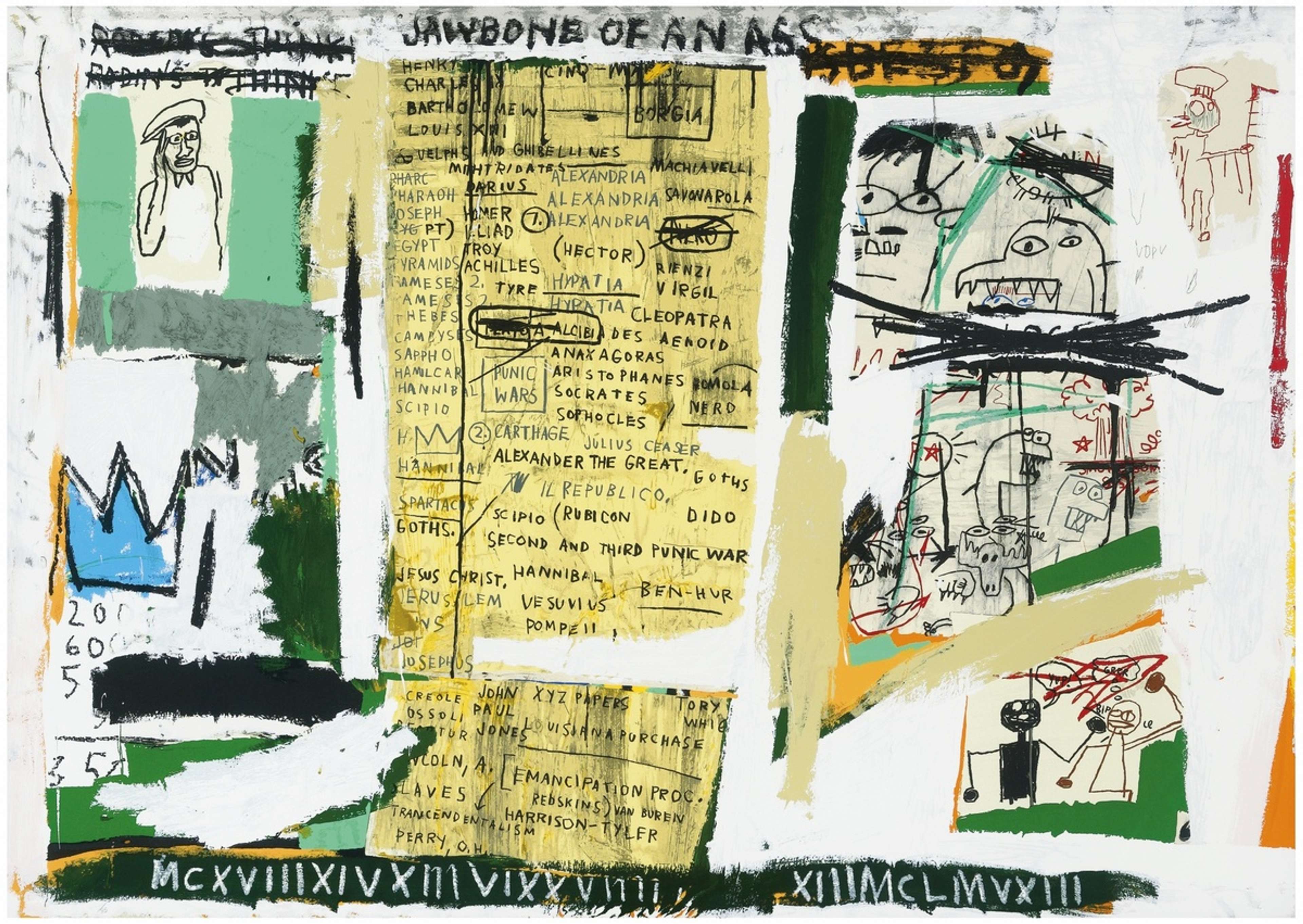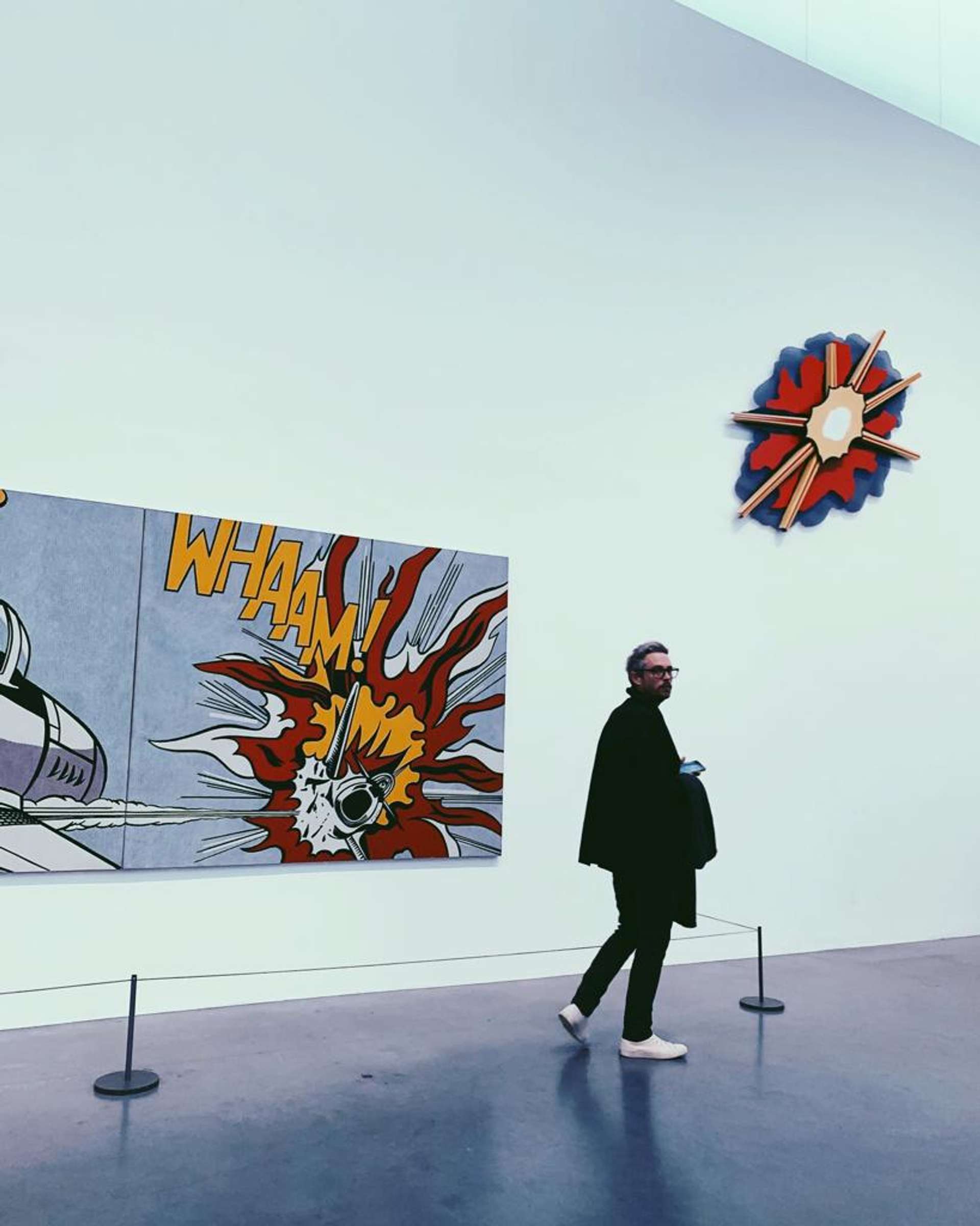Exploring the Impact of Millennials on the Art World
 Jawbone Of An Ass © Jean-Michel Basquiat 2004
Jawbone Of An Ass © Jean-Michel Basquiat 2004Live TradingFloor
Millennials are not only reshaping the way we live and work, but are also reshaping the way we experience and engage with art. As the largest living generation are coming of age and gaining financial independence, they are also gaining traction in the art world. From their unique aesthetic preferences to their use of technology to access and share art, they are changing the way art is created, marketed and sold and are having an increasingly significant impact.
Who are Millennials?
The millennial generation refers to individuals born between 1981 and 1996. They are currently in their mid-20s to late 30s and represent a significant demographic and economic force. Having grown up with technology, they are known for being highly connected and global in their outlook. They value experiences over possessions, and prioritise social and environmental causes.
Compared to previous generations, millennials have a different approach to art. They are more interested in discovering new artists and emerging trends, often using social media as a tool to do so. They are also more likely to purchase art as a way to express their personal identity and values, rather than as a status symbol or investment.
One example of a millennial artist is KAWS, who has risen to fame through his collaborations with brands such as Uniqlo and his use of social media to promote his work. His artwork blends pop culture with fine art, reflecting the millennial generation's fascination with both high and low culture.
Another example is the street artist Banksy, whose work often critiques consumer culture and social issues. Banksy's anonymity and use of unconventional mediums have helped him appeal to millennials, who are drawn to his anti-establishment message and unique approach to art.
The economic impact of millennials on the art world is also significant. According to a report by Art Basel and UBS, millennials account for 42% of all art buyers and 25% of total spending in the art market. This shift towards a younger demographic of collectors has led to an increased demand for street art and digital art, which are more accessible and affordable than traditional forms of art.
 Dropping a Han Dynasty Urn © Ai Weiwei 1995
Dropping a Han Dynasty Urn © Ai Weiwei 1995The Millennial Takeover: How a New Generation is Shaping the Art World
The art market has long been considered an elite and exclusive industry, but the rise of millennials is changing that. With an estimated purchasing power of $2.5 trillion globally, this generation is playing a crucial role in the art market's growth and evolution.
One of the key findings is that millennials are more interested in contemporary art, street art, and digital art than previous generations. They are also more likely to buy art online, using technology to research and buy artworks. Social media has also played a significant role in shaping millennials' art preferences and buying habits. Platforms like Instagram and Pinterest have made art more accessible to a wider audience, with artworks being shared, liked, and discussed by millions of users worldwide.
Moreover, millennials' ethical and social values also influence their art preferences. They are more likely to support artists who address environmental, social, and political issues in their work. For example, artists like Ai Weiwei and Banksy, whose works often contain social commentary, are popular among millennial collectors.
One of the artworks that resonate with millennials is KAWS's Companion sculptures. The sculpture, which features a cartoonish figure with oversized ears and X's for eyes, is a favourite among millennials for its playful design and pop-culture references. Another popular artwork is Yayoi Kusama's Infinity Mirror Room, which features an immersive installation that offers a unique sensory experience.
It is evident that millennials are changing the art market, demanding more accessible and inclusive spaces, driving the market towards contemporary and digital art, and valuing social and ethical considerations in the artwork. Their buying habits and preferences are heavily influenced by technology and social media, creating new opportunities for artists and galleries.
 Image © Smithsonian Institution / Infinity Mirror Rooms © Yayoi Kusama, 2013
Image © Smithsonian Institution / Infinity Mirror Rooms © Yayoi Kusama, 2013The New Art Collectors and the Changing Art World
The emergence of a new generation of collectors, the so-called “next gen collectors”, has been causing ripples in the art world in recent years. Millennials are taking over the baton from previous generations and are reshaping the art market with their unique preferences and motivations.
For next gen collectors, art collecting is not just about status or investment; it's a means of self-expression and a reflection of their values and worldview. They prioritise authenticity, originality, and social relevance in their art acquisitions. Their focus on diversity and inclusivity has led to increased demand for underrepresented artists and artworks, leading to more diverse and dynamic art scenes worldwide.
The impact of next gen collectors on the art world is evident in the rise of emerging artists such as Tschabalala Self, Harold Ancart, and Njideka Akunyili Crosby, whose works all reflect the sensibilities of the younger generation. For example, Self's works, which depict contemporary black identity, have been collected by next gen collectors like the founders of the Black Art Incubator.
Next gen collectors are also driving demand for immersive art experiences like Olafur Eliasson's installations, which allow them to engage with art beyond the traditional confines of galleries and museums.
The art world is being revolutionised by the new values and ideas that this generation of collectors are bringing to the table, with their demand for authenticity, originality, and diversity pushing the art market to adapt. As stated by artist and gallerist Jeffrey Deitch, “The next generation of collectors is not waiting for permission to collect. They are just doing it, and they are changing the game.”
Breaking the Mould: How Millennials are Redefining Art Appreciation
For millennials, art appreciation is not just about aesthetics. They value art as a means of social commentary and activism. Through art, they address issues such as diversity, inclusion, and mental health. For instance, Titus Kaphar's Shifting The Gaze series challenges the traditional portrayal of Black people in art history, whilst Jenny Holzer's Truisms installations confront viewers with thought-provoking statements about society.
Millennials also express themselves through art by creating their own artwork or collaborating with artists to develop unique pieces. They often use digital mediums to create art, such as GIFs, memes, and augmented reality. For example, Rafael Lozano-Hemmer's Pulse installation allows viewers to control the rhythm of a giant heartbeat using their own pulse.
Anna Brady, an art journalist and editor, notes: “Millennials' embrace of new and unconventional mediums, their emphasis on individuality and authenticity, and their desire to challenge the status quo, have created a shift in the art world. They are creating new demand for emerging artists, new ways of exhibiting and selling art, and are creating a new language around art.”
This shift in the art world means that emerging artists are gaining more visibility and recognition. Artists such as Alexandra Levasseur, who blends painting and collage, and Amoako Boafo, who uses bold colours and expressive brushstrokes to depict Black figures, are gaining popularity among millennials. The rise of online art marketplaces and social media has also made it easier for millennials to discover and purchase art.
By valuing art as a means of self-expression and social commentary, millennials are creating new demand for emerging artists and unconventional mediums, and are subsequently having a significant and ongoing impact on the art world.
Millennials and Post-Capitalism: Navigating the Changing Landscape of the Art World
Coming of age in a time of unprecedented economic, social, and political upheaval, the millennial approach to capitalism and the role of art in society is distinctly different from previous generations. With many millennials expressing dissatisfaction with the current economic system and calling for a more equitable and sustainable future, post-capitalism has emerged as a potential alternative.
This shift towards post-capitalism is reflected in the art world, with many artists exploring themes such as social justice, environmentalism, and community-building. For example, artist Tavares Strachan's Enoch sculpture comments on the impact of climate change on communities, while Jaune Quick-to-See Smith's paintings address issues such as Native American identity and land rights.
In addition, millennial collectors are increasingly investing in art that aligns with their values and beliefs. For instance, Kehinde Wiley's portrait of President Obama, which reimagines the traditional portraiture genre with an African American subject, has become a symbol of hope and progress for many millennials.
 Image © The New Yorker / Portrait Of Barack Obama © Kehinde Wiley 2018
Image © The New Yorker / Portrait Of Barack Obama © Kehinde Wiley 2018As the millennial generation continues to shape the art world, it is likely that the shift towards postcapitalism will accelerate. This could lead to new models of art ownership, such as cooperatives or community-owned galleries, and a greater emphasis on art's social and environmental impact.
As the art world continues to evolve, it is essential for everyone to engage with it in new and exciting ways. Whether it is by visiting a local gallery or museum, exploring the latest art trends on social media, or investing in emerging artists, we can all play a part in shaping the future of art. So, let's embrace the creativity and innovation that millennials are bringing to the art world and work together to build a more inclusive, diverse, and exciting art scene for future generations to enjoy.









